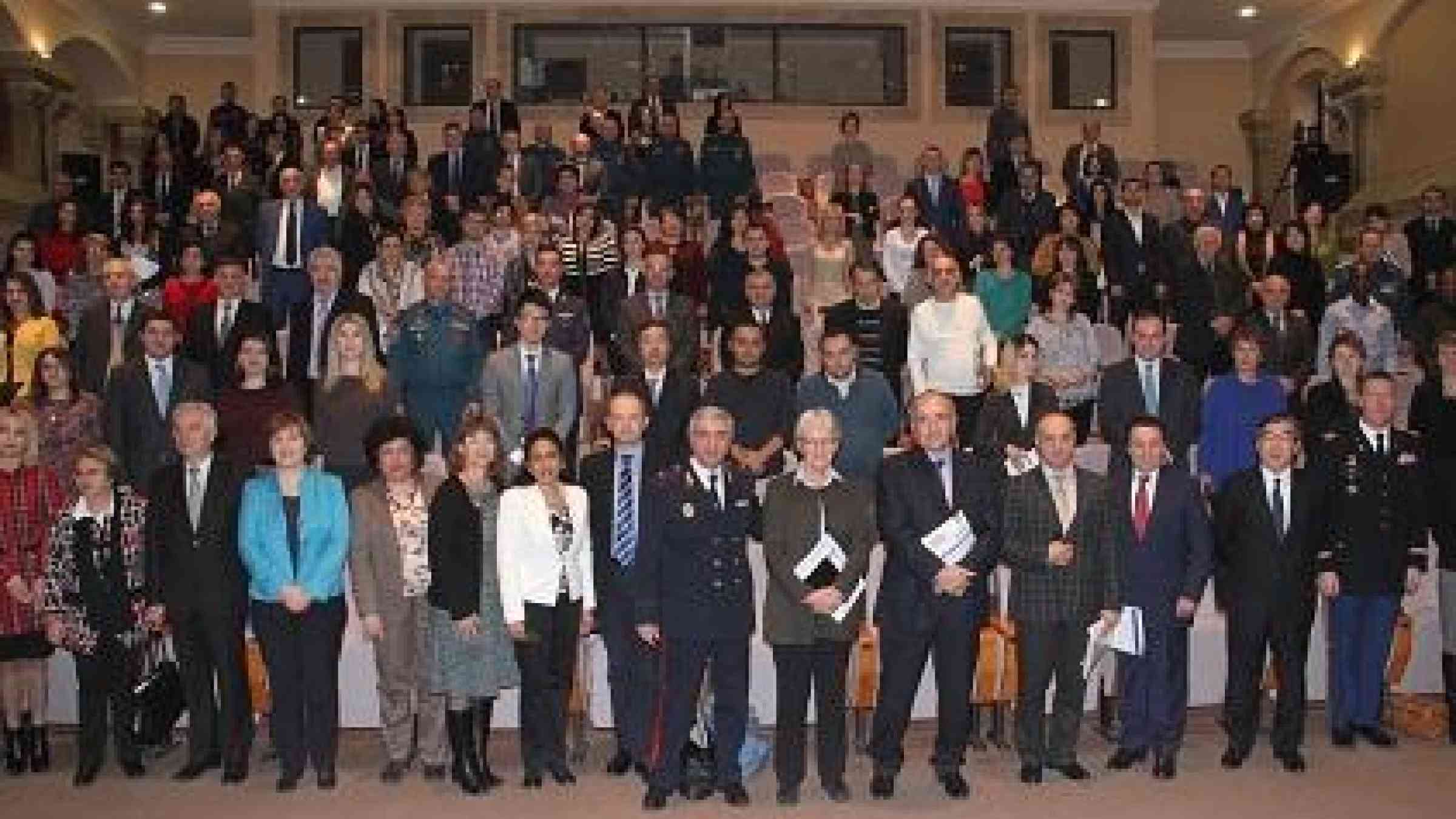Getting the media onside for Sendai

YEREVAN, 15 December 2015 – Getting the media involved in raising public awareness about how to reduce the impact of natural and man-made hazards will be critical to the success of the Sendai Framework for Disaster Risk Reduction, participants at a global conference said on Tuesday.
“Information and communication are among the essential components of disaster risk reduction,” Ms. Tania Radocaj, acting UN Resident Coordinator in Armenia, told the 3rd International Conference on Public Awareness as a Cornerstone of Disaster Risk Reduction and Sustainable Development.
The two-day gathering has drawn dozens of journalists, media policy experts and disaster risk reduction specialists from around the world to Yerevan, capital of Armenia. In the 27 years since the country was hit by the devastating Spitak earthquake it has honed its disaster risk reduction capacity, including public awareness programmes.
“In the transition towards a prevention culture, communication and advocacy is critical. The final goal is to increase public awareness and preparedness. Only an aware, prepared population can build a disaster-proof country. The media play a crucial role. And mitigation of risk is also a cornerstone of sustainable development,” said Mr. Vache Terteryan, Armenia’s Deputy Minister of Territorial and Emergency Situations.
The Sendai Framework, a 15-year global agreement adopted in March at the 3rd UN World Conference on Disaster Reduction in Japan, has seven targets. It aims to bring about substantial reductions in global disaster deaths, the number of affected people and economic losses, as well as increase the number of countries with national and local risk reduction strategies, bolster the capacity of developing countries, and vastly increase coverage by early warning systems.
“Practitioners know that awareness is the first and last mile of disaster risk reduction,” said Ms. Margareta Wahlström, Special Representative of the UN Secretary-General for Disaster Risk Reduction, who hailed Armenia’s strong commitment to the Sendai Framework both nationally and as part of regional cooperation.
“A key question is why is so difficult to deconstruct risk into pieces of knowledge that will instigate action,” she added.
The Sendai Framework identifies the media as a key partner in the drive to ensure that populations are risk-aware, which means more than just knowing where to run if a hazard such as flooding strikes and extends to understanding how to curb wider risks such as environmental degradation or bad construction habits.
The issue can be a hard sell, however, even though it matters to people’s lives.
“We all agree how important the media are to this. Disasters are telegenic and photogenic when they happen. We don’t have to persuade the media to cover a disaster. It’s a bigger problem when it comes to conveying messages about mitigating disaster risk,” said Mr. Piotr Antoni Świtalski, Ambassador of the European Union in Armenia.
Development journalist Mr. Amjad Bhatti, a founder of the Rural Development Policy Institute in Pakistan, agreed.
“There are different media responses to different categories of disasters. Sudden onset disasters such as earthquakes have the most sensational value. They attract much more attention than slow onset disasters such as drought,” he said. “The media in general follows the misery, but misses out on forecasting the misery.”
In a wide-ranging debate on the challenges and solutions of communicating about disaster risk – including how to overcome the “if it bleeds, it leads” editorial approach – disaster risk experts said they understood the need to pitch messages in a fast-changing world.
“Several of our traditional assumptions have to be changed,” said Ms. Wahlström.
Media participants said that raising awareness within their industry itself is also essential.
“If we want to shift from disaster management to risk management, and raise its impact, the media professionals have to be taught how,” said former BBC correspondent Mr. Mark Grigoryan.
Since 2010, the UN Office for Disaster Risk Reduction (UNISDR) has trained more than 150 reporters and dozens of media-related government officials in disaster risk reduction issues.
Many media are leading the way already.
Risk reduction information and early warning is etched into the programming of broadcasters in highly hazard-prone countries such as Japan and Australia, noted Ms. Natalia Ilieva of the Asia-Pacific Broadcasting Union.
Editorial decisions to carry risk reduction stories, not just cover disasters, can be life-savers in a country such as the Philippines, which faces more than a dozen typhoons a year.
“Disaster risk reduction is slowly, but surely, becoming a household world,” said Mr. Jerry Esplanada of the Philippine Daily Inquirer.